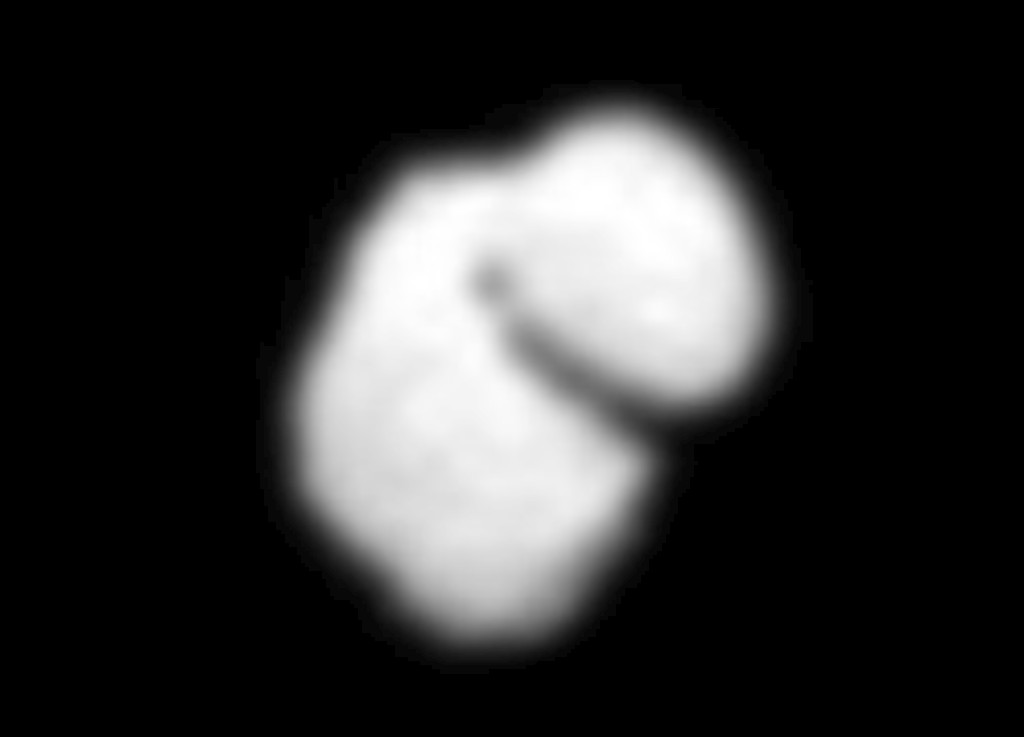
About ten years ago, more precisely on March 2, 2004, an Ariane-5 rocket launched the European Rosetta probe into space. The scientific objective of this mission is to study comet 67P/Churyumov-Gerasimenko in detail and contribute to our knowledge of the formation of the solar system.
Comet 67P/Churyumov-Gerasimenko was discovered in 1969 when Klim Churyumov was examining photos of regions of space taken by Svetlana Gerasimenko. This is how the name of this star can be understood. After that this comet was confirmed and observed several times by astronomers as it approached the Earth and the Sun. It is known to currently have an orbital period of 6,45 years.
After a decade of space pilgrimage approaching a moment of the comet's orbit around the Sun, the Rosetta spacecraft is now less than five thousand kilometers from the comet. This approach has already allowed the probe to photograph the comet's profile. A few days ago, the European Space Agency (ESA) released increasingly detailed images of comet 67P/Churyumov-Gerasimenko, like the one published next door.
The images captured show an irregularly shaped comet and some say it resembles a rubber duck. In fact, the photo shows a more elongated piece that resembles a head on another larger, rounded piece that would be the body.
Recognition of the comet's intriguing shape is important to the scientists leading the mission. Remember that the Roseta probe carries a small module, the File (with 100 kilos), which will be dropped in November this year to land on the surface of the comet. “We will have to do an analysis and modeling of the shape of the comet, to determine the best way to fly around such a uniquely shaped body, taking into account flight control and astrodynamics, the scientific needs of the mission and the landing-related elements, such as site analysis and visibility between the landing module and the probe,” explained in a statement from ESA Fred Jansen, the head of the Rosetta mission.
This space mission is surrounded by high expectations, as it will be the first time that scientific equipment will be placed on the surface of a comet to study it. Comets contain cosmic dust and are covered with primordial ice. They are representative relics of the constitution of our solar system, frozen testimonies of its formation.
Thus, the analysis of comet 67P/Churyumov-Gerasimenko could provide clues about the early composition of the solar system and information about the formation of planets such as Earth. It should be noted that scientists have indications that much of the water and some organic compounds that gave rise to life on Earth may have come from comets similar to this one, which is now being studied, and that bombarded our planet at the beginning of its formation. Your study may bring new data that will confront these hypotheses. In addition, this is a unique opportunity to investigate the formation of these wandering bodies in our solar system.
Remember that the name of this probe, Rosetta, is a reference to the stone with the same name that was discovered in 1799 and allowed the French archaeologist Jean-François Champollion to decipher the Egyptian hieroglyphs. Thus, the name with which this space mission was named represents the scientific spirit of exploration and decipherment of information that will allow us to better reconstruct the primordial moments of the formation of our cosmic home and that ultimately led to the evolution of our species, of the intelligence that understands and marvels at the Cosmos.
Author: Antonio Piedade
Science in the Regional Press – Ciência Viva

















Comments